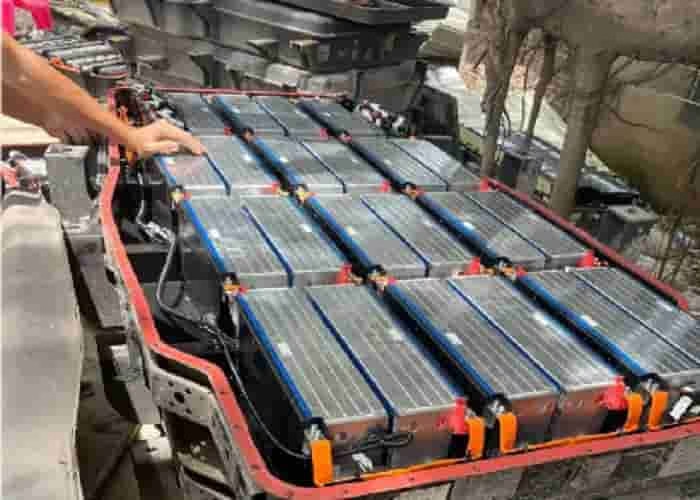In the first quarter of 2025, NIO’s losses reached 6.7 billion yuan, with cash on the account currently at 26 billion yuan, and a new round of financing in April, about 4 billion yuan.
Let’s check the data. NIO’s product gross profit is only 7.64%. The table below is also quite clear. So what should we do next?
1. NIO
| index | 2025 Q1 | Year-on-year change |
| Revenue | 12.035 billion yuan | +21.5% |
| Net loss | 6.75 billion yuan | +30.2% |
| Gross profit margin | 7.6% | +2.7% |
| R&D Investment | 3.18 billion yuan | +18.7% |
| Delivery volume | 42,100 vehicles | +40.1% |
| Cash reserves | 26 billion yuan | -11.4% |
Delivery and products
Delivery volume: 42,094 vehicles (year-on-year + 40.1%), 47,131 vehicles delivered in April-May, 72,000-75,000 vehicles guided for the second quarter, new ES6, ET9 and other models drive recovery.
Product structure: high-end brands (65%) and Ledao family brands (35%) dual tracks, ET9’s first month sales exceeded BMW 7 Series, and intelligent driving technology (Shenji chip, NIO world model) was implemented. The delivery volume of cars has increased year-on-year, and the sales of mid-to-high-end brands have also increased.
Assets and liabilities
Assets: 98.163 billion yuan (month-on-month – 8.6%), cash 26 billion yuan (year-on-year – 32.6%, supplemented by an additional issuance of 4 billion Hong Kong dollars in April).
Liabilities: Current liabilities of 59.492 billion yuan (-4.3% quarter-on-quarter), long-term liabilities of 31.357 billion yuan (+0.3% quarter-on-quarter),
Interest-bearing liabilities need to be summarized into short-term/long-term loans, bonds payable, etc. (not listed separately), and liquidity pressure is significant (current liabilities > cash).
2. Costs and expenses
Sales cost: 11.115 billion yuan (+18.0% year-on-year), with the increase in delivery volume offset by the decrease in material costs.
R&D expenses: 3.181 billion yuan (+11.1% year-on-year), focusing on chips, smart driving and new models, with the industry-leading proportion of technology investment.
Sales and administrative expenses: 4.401 billion yuan (+46.8% year-on-year), driven by market expansion (overseas, brand marketing), and optimized plans for the second quarter.
3. Technology and the future
Smart driving: Shenji chip mass production, NIO world model iteration, full push in the second half of 2025, improving user experience and cost control.
Product Outlook: Delivered 72,000-75,000 vehicles in the second quarter (revenue of 19.513-20.068 billion yuan, +11.8%-15.0% year-on-year), high-end (ET9) and family (Ledao) dual-track expansion, technology-driven long-term growth.
4. Risks and Challenges
Price war: gross profit margin is lower than Ideal (20.5%) and BYD (20.07%), and cost pressure is high.
Cash flow: debt ratio is 92.5%, relying on financing (additional issuance, bonds) to maintain operations.
Overseas market: European anti-subsidy and US tariffs affect exports, and the domestic market dependence exceeds 90%
At present, the company’s product gross profit margin does not have an advantage over its peers, and the speed of overseas market development is relatively slow
5. Industry comparison and suggestions
Comparison: Ideal is profitable and leading in delivery (family market), BYD has significant scale effect (profitability, cost control),
Weilai differentiates itself with high-end technology (chips, battery replacement), and needs to balance losses and technology investment.
Recommendation: In the short term, promote delivery volume and optimize costs; in the long term, deepen technical barriers, expand the family market, and deal with overseas risks with caution.
Risk warning
The battery swap model continues to burn money, and the net loss in a single quarter has expanded to 6.75 billion yuan, and cash reserves have decreased by 11.4% year-on-year.
The industry price war has intensified, and the gross profit margin of vehicles has dropped by 5.5 percentage points from 13.1% in 2024Q4.
At present, Weilai’s cash flow can only support it for about a year
Weilai 2025Q1 shows technical resilience (delivery structure optimization, intelligent driving breakthrough),
but losses and cash flow pressures still exist. The second quarter is a key verification period (delivery, profit improvement), and it needs to rely on technology-driven high-end and scale effects in the long term.
Weilai’s current monthly R&D expenses are about 3 billion, which will be reduced to 2-2.5 billion in the future. Using funds on high-yield projects will not affect the company’s R&D capabilities.
















Leave a Reply